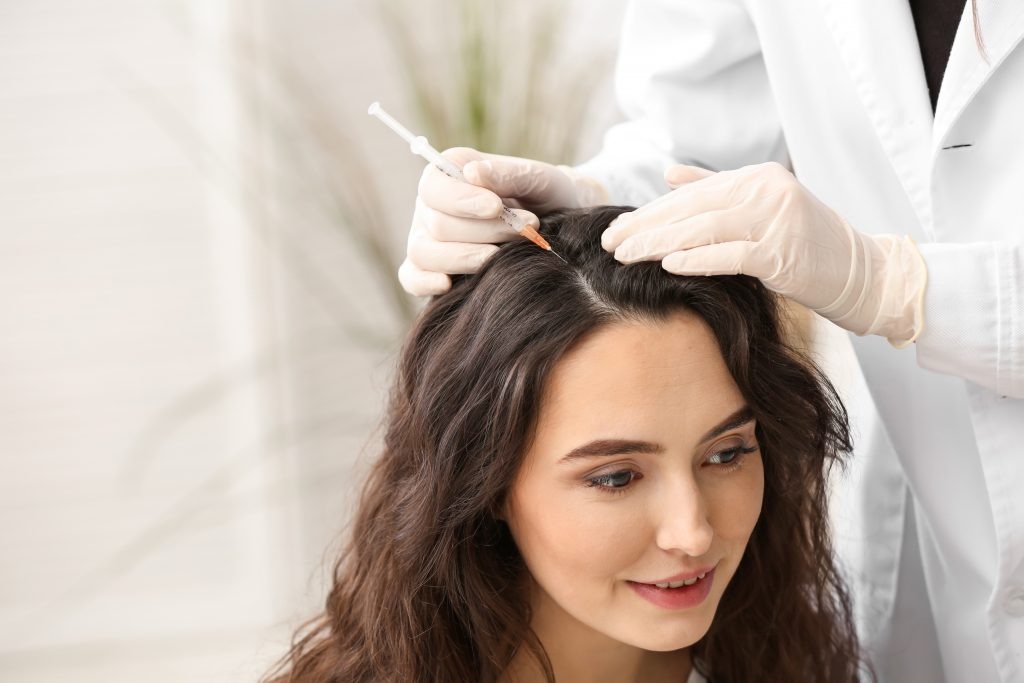Hair loss can be more than just a cosmetic concern—it often affects confidence and self-esteem. As a result, many individuals are turning to Platelet-Rich Plasma (PRP) therapy to regain fuller, thicker hair naturally. PRP uses components from your own blood to stimulate dormant hair follicles and encourage hair growth. But while its benefits are well known, one pressing question often arises: how often should someone get PRP hair treatment to see and maintain results?
The frequency of sessions is a crucial factor in determining how effective PRP therapy will be. Whether you’re beginning your hair restoration journey or are already seeing progress, knowing the optimal schedule can make all the difference. In the middle of any successful treatment plan lies consistency—and when it comes to the Best PRP Hair Treatment in Dubai, this couldn’t be more true.
Understanding the PRP Process
Before diving into the treatment schedule, it’s essential to understand how PRP therapy works. PRP is derived from your own blood, which is spun in a centrifuge to separate the platelets. These platelets are rich in growth factors and are then injected into the scalp in areas where thinning is most prominent.
These growth factors help rejuvenate hair follicles, increase blood supply, and enhance the natural growth cycle. Since it’s a biological process, results depend heavily on each individual’s condition, genetics, and commitment to the treatment regimen.
The Initial Treatment Phase: Building Momentum
Most professionals recommend a series of initial PRP sessions to jump-start the process. Typically, this means getting treatments once a month for the first three to four months. This foundational phase allows the scalp to absorb the growth factors consistently and helps stimulate hair follicles that are in the early stages of dormancy.
It’s important to be patient during this time. Results are not usually immediate; you may start noticing a reduction in hair shedding within the first couple of months, followed by gradual thickening and new growth. Think of it as setting the groundwork for a flourishing garden—you need to nourish it steadily before you see the blooms.
Maintenance Phase: Sustaining Your Gains
Once the initial phase is complete and noticeable improvement is seen, the focus shifts to maintenance. Most experts recommend follow-up sessions every 4 to 6 months, depending on your individual progress and hair condition.
These maintenance treatments are essential because PRP is not a one-and-done solution. Hair loss can be a chronic issue, especially if it’s hereditary or stress-related. Regular sessions help keep the hair follicles active and prevent regression. In other words, they maintain the momentum built during the initial treatments.
Factors Influencing Frequency
Not everyone responds to PRP treatment the same way, so the ideal frequency may vary. Here are some key factors that can influence how often you may need sessions:
-
Age and Health: Younger individuals or those with better overall health may require fewer treatments due to a more responsive system.
-
Severity of Hair Loss: More advanced hair thinning might need more frequent treatments initially.
-
Underlying Causes: Conditions like hormonal imbalances, stress, or nutritional deficiencies can affect how quickly and how well your hair responds.
-
Lifestyle Choices: Smoking, poor diet, and lack of sleep can slow down the healing and regeneration process, which may necessitate more frequent visits.
It’s always important to assess how your hair is responding. If you’re noticing consistent growth and a healthier scalp, spacing your sessions further apart may be reasonable. But if you start seeing signs of increased hair shedding or thinning again, a touch-up session might be in order.

Tracking Progress: Listen to Your Scalp
A crucial part of deciding how often to get PRP hair treatment is staying in tune with your scalp. If you see new baby hairs appearing, notice less hair in your brush, and feel more volume, your treatment is likely working well. On the other hand, if improvements plateau or regress, that may be a sign to revisit your schedule.
Taking progress photos, noting any changes, and keeping an open dialogue with your treatment provider can help tailor a frequency plan that works best for you. Your hair journey is unique, and the approach should reflect that.
The Importance of Consistency
Like many regenerative treatments, PRP works best with consistency. Skipping sessions or going too long between treatments can slow down results or even cause previous gains to fade. Think of PRP like a fitness plan for your scalp—just as regular workouts yield better results, a steady schedule ensures healthier, more resilient hair.
Also, supporting your PRP treatments with a healthy diet, proper hair care, stress management, and adequate hydration can further boost results and possibly reduce the frequency needed in the long run.
Long-Term Outlook: A Journey, Not a Quick Fix
The truth is, PRP isn’t a miracle cure. It’s a long-term investment in your hair health. While some people enjoy prolonged benefits even after a few sessions, others may need ongoing maintenance every few months. The key is to manage expectations and commit to the journey. Over time, with the right strategy and dedication, many experience not only cosmetic improvement but also renewed confidence.
Whether you’re looking to regain lost volume, stop hair fall, or simply preserve what you have, understanding the timeline and sticking to a personalized schedule can make all the difference. If you’re exploring the Best PRP Hair Treatment Dubai, remember that lasting results often come with regular care and a tailored plan.
In conclusion, how often you should get PRP hair treatment depends on your unique needs, the stage of hair loss, and how your scalp responds. But with a thoughtful, consistent approach, you can keep your hair growing strong and healthy for the long term.
